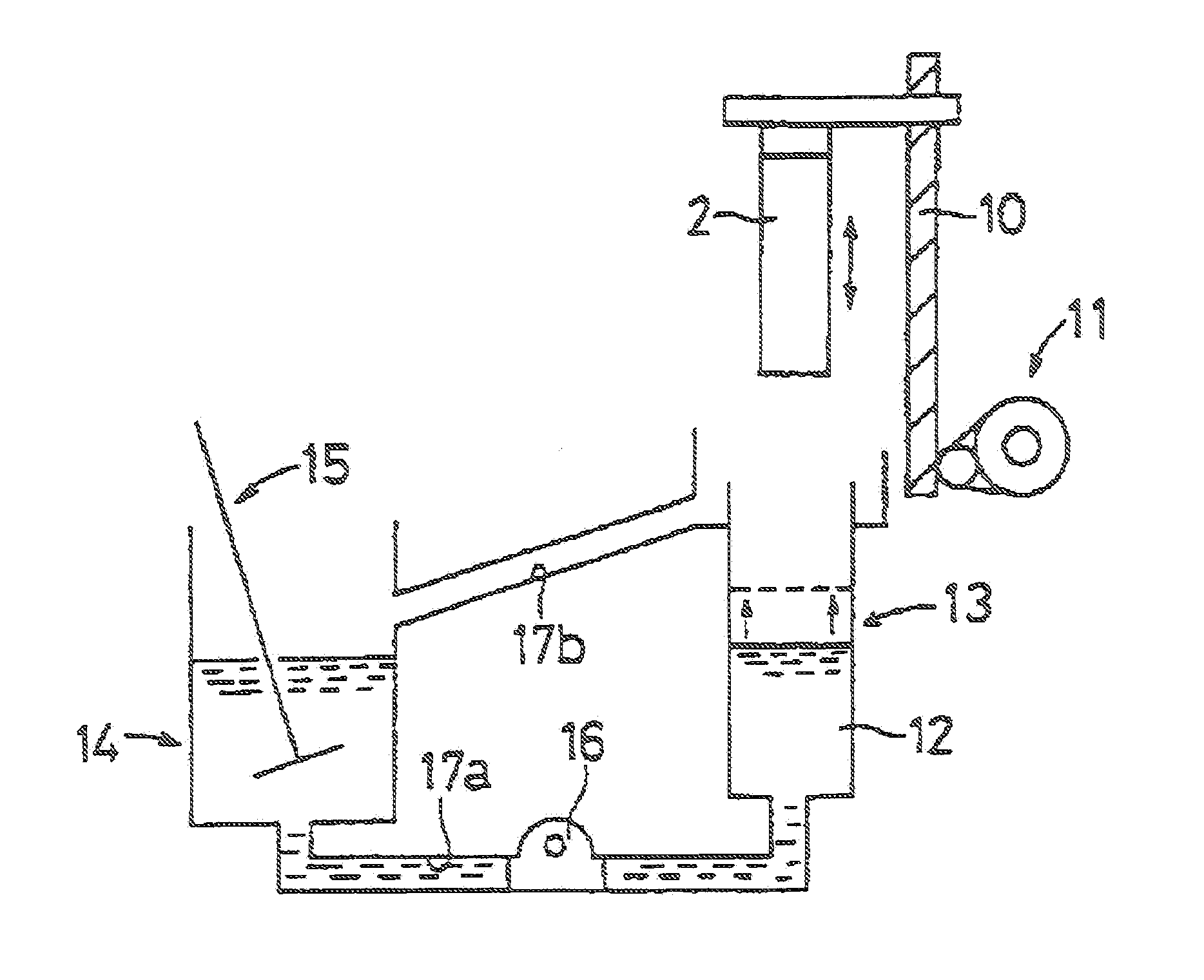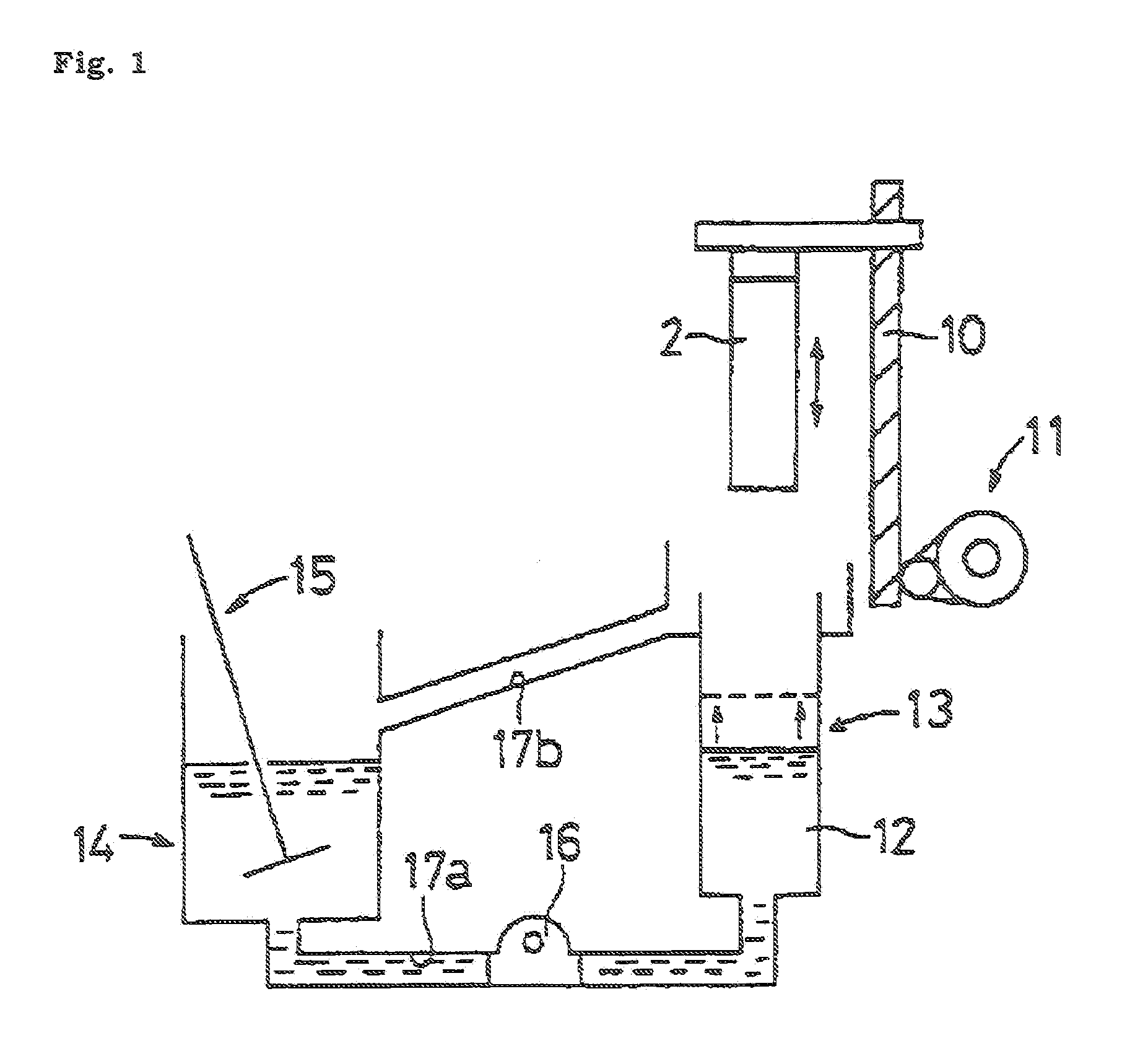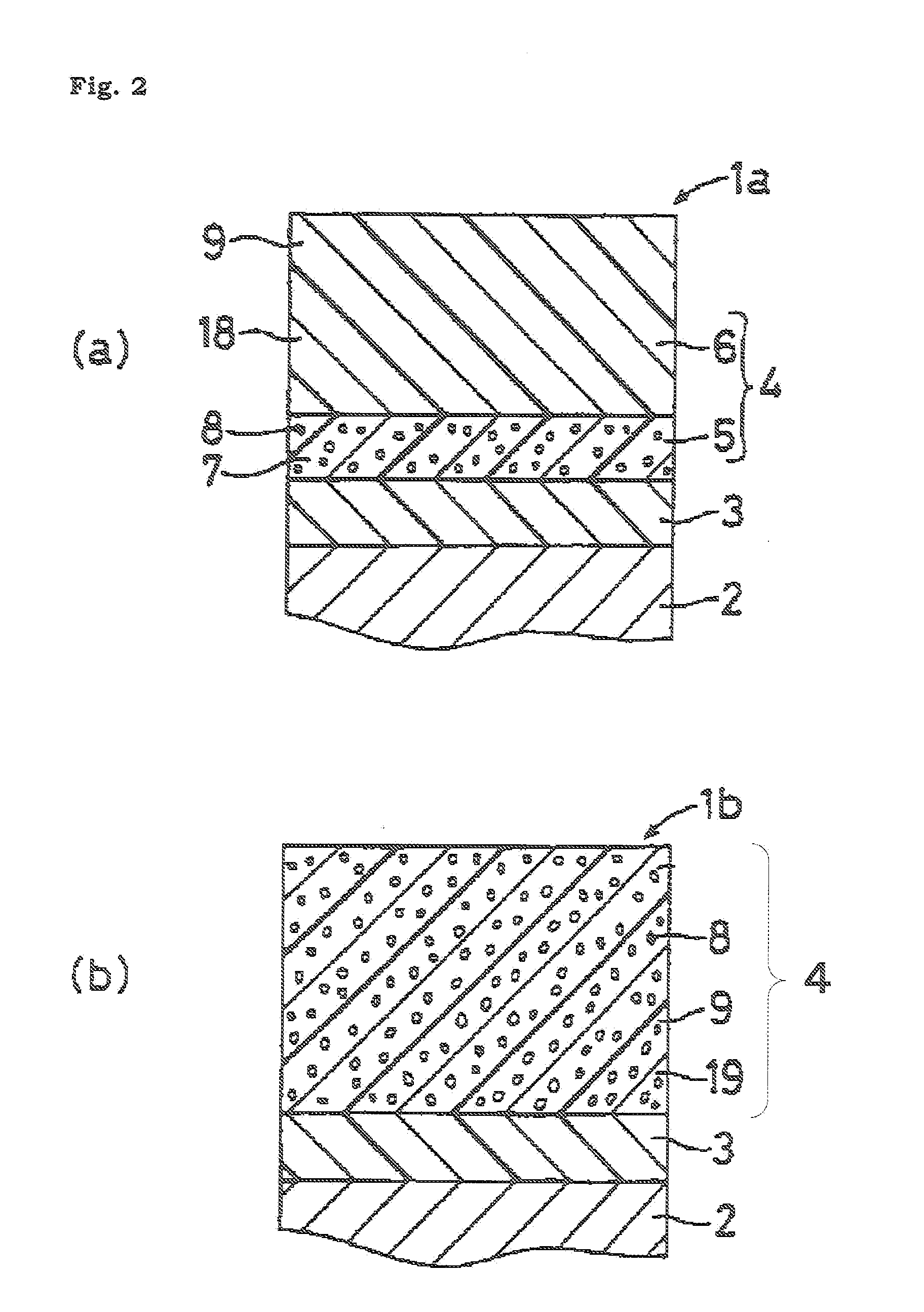Electrophotographic photoconductor and image forming apparatus including the same, and coating solution for undercoat layer formation in electrophotographic photoconductor
a photoconductor and electrophotography technology, applied in the field of electrophotographic photoconductor, can solve the problems of large accumulation of residual potential, large surface charge disappearance or decrease, image defect, etc., and achieve the effect of preventing image fogging, preventing image defect generation, and preventing microscopical characteristics from fluctuating
- Summary
- Abstract
- Description
- Claims
- Application Information
AI Technical Summary
Benefits of technology
Problems solved by technology
Method used
Image
Examples
production example 1
Production of Titanylphthalocyanine
[0226]First, 40 g of o-phthalodinitrile, 18 g of titanium tetrachloride and 500 ml of α-chloronaphthalene were heated and stirred in a nitrogen atmosphere at a temperature of 200° C. to 250° C. for 3 hours to react the reactants and allowed to cool to 100° C. to 130° C., and then the reaction product was filtered off hot, washed with 200 ml of α-chloronaphthalene heated to 100° C. to obtain a crude product of dichlorotitanium-phthalocyanine. At room temperature, the crude product was washed with 200 ml of α-chloronaphthalene, and then washed with 200 ml of methanol, and further subjected to heat spray washing in 500 ml of methanol for 1 hour. After filtered, the resulting crude product was stirred and dissolved in 100 ml of concentrated sulfuric acid to filter off insolubles. The sulfuric acid solution was added to 3000 ml of water, and the resulting crystal was filtered off to be repeatedly subjected to heat spray washing with 500 ml of hot water ...
production example 2
Production of Titanylphthalocyanine
[0229]A crude product of dichlorotitanium-phthalocyanine was obtained in the same manner as in Production Example 1, and then at room temperature, the crude product was washed with 200 ml of α-chloronaphthalene, washed with 200 ml of methanol, and further subjected to heat spray washing in 500 ml of methanol for 1 hour. After filtered, the resulting crude product was repeatedly subjected to heat spray washing in 500 ml of water until the pH thereof reached 6 to 7, and then dried to obtain a titanylphthalocyanine crystal (30 g) of a crystal type having a structure represented by the formula (I) and showing an X-ray diffraction spectrum shown in FIG. 5.
[0230]As in the case of Production Example 1, the X-ray diffraction spectrum of the crystal shown in FIG. 5 indicated that the titanylphthalocyanine obtained as described above was a titanylphthalocyanine of a crystal type having a maximum diffraction peak at a Bragg angle (2θ±0.2°) of 27.3° and diffra...
example 2
[0236]A monolayer type electrophotographic photoconductor 1b was produced in the same manner as in Example 1 except that the content ratio between the titanium oxides and the resin in the coating solution for undercoat layer formation used in Example 1 was changed as follows.
MAXLIGHT (registered trademark) TS-04 (product byShowa Denko K.K., titanium oxide treated with anhydrous silicondioxide, titanium oxide: 67% by weight, anhydrous silicon dioxide:33% by weight, particle diameter of titanium oxide particles: 30nm, particle diameter of titanium oxide particles treated withanhydrous silicon dioxide: 38 nm)0.08 parts by weightTitanium oxide MT-500SA (product by Tayca, titaniumoxide treated with hydrous silicon dioxide and aluminumhydroxide, titanium oxide: 90% by weight, Al(OH)3: 5% by weight,SiO2•nH2O: 5% by weight)0.02 parts by weightPolyamide resin (CM8000, product by Toray 0.9 parts by weightIndustries, Inc.)
PUM
| Property | Measurement | Unit |
|---|---|---|
| 2θ±0 | aaaaa | aaaaa |
| 2θ±0 | aaaaa | aaaaa |
| 2θ±0 | aaaaa | aaaaa |
Abstract
Description
Claims
Application Information
 Login to View More
Login to View More - R&D
- Intellectual Property
- Life Sciences
- Materials
- Tech Scout
- Unparalleled Data Quality
- Higher Quality Content
- 60% Fewer Hallucinations
Browse by: Latest US Patents, China's latest patents, Technical Efficacy Thesaurus, Application Domain, Technology Topic, Popular Technical Reports.
© 2025 PatSnap. All rights reserved.Legal|Privacy policy|Modern Slavery Act Transparency Statement|Sitemap|About US| Contact US: help@patsnap.com



